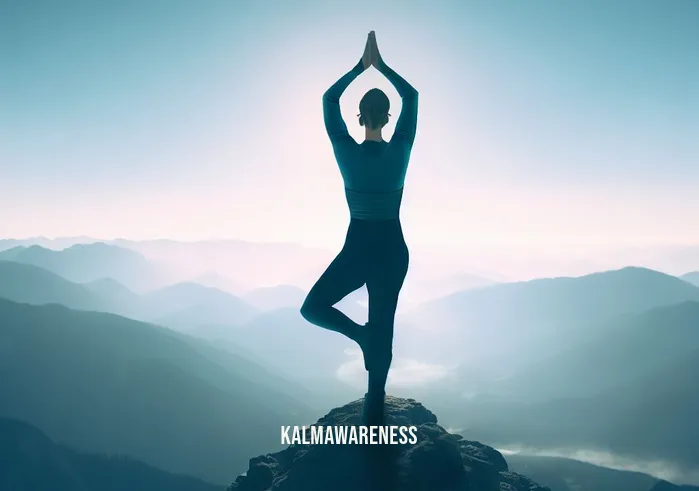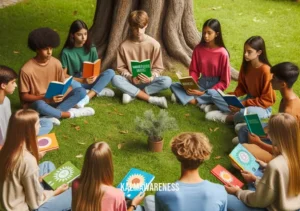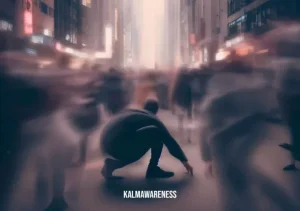The Significance of Posture in Meditation
The quest for a balanced and mindful life often leads us down many avenues, but few are as universally acknowledged as the art of meditation. If you’ve considered embarking on a meditation journey, then understanding the value of posture is the perfect starting point. Why? Because a person meditating with improper posture may experience discomfort, distraction, and potentially even pain, all of which defeat the purpose of the practice.
Why Is Posture So Crucial?
Posture isn’t merely a stance; it’s a statement of intent. It communicates to both your body and mind that you are entering a state of mindfulness, prepared to engage in a serene moment of introspection. This element of some meditation exercises is so crucial that its neglect can lead to a fragmented experience. The straighter you sit, the better the energy flow, which aids in focus and mental clarity.
“Posture is the beginning and the end of meditation. Everything in between is just the journey.”
The Best Ways to Sit for Meditation
- Cross-legged on a cushion: This is a classic posture that aligns the spine and opens up the chest for better breathing.
- Seated on a chair: For those who find it difficult to sit on the floor, sitting on a focus-side chair can be an alternative that still supports spinal alignment.
- Lying down: Contrary to popular belief, you can meditate lying down, although it’s easier to drift into sleep in this position.
Remember, the aim is to find a posture that you can sustain comfortably for a longer duration.
The Science Behind Proper Posture
Adopting a balanced posture activates the body’s proprioceptive system, which is the awareness of one’s body in space. It essentially helps to stabilize your awareness, and let you connect more profoundly with the present moment. In the long run, this stable posture promotes sustainable self-care, as it reduces the risk of musculoskeletal pains that can arise from poor posture.
How Does Posture Complement Breathing?
Breathing is another cornerstone in meditation. Proper posture naturally complements effective breathing techniques, allowing for deeper inhalations and exhalations. The union of posture and breathing creates a harmonious experience, enabling the practitioner to get deep into meditation quickly.
The Inclusivity of Postural Awareness in Meditation
One of the beauties of meditation is its inclusivity. Whether you are a busy professional or a teenager, incorporating mindful posture into your meditation practice is beneficial. It has even found its way into special life events like mindful hypnobirthing, a practice that assists expectant mothers in managing labor pain through meditation and breath control.
If you are starting, there are comprehensive resources like Jack Kornfield’s Meditation for Beginners, which can guide you through the basics, emphasizing posture and other crucial elements.
Onward to Mindfulness and Beyond
If you have ever pondered about the meaning of being truly present, the act of sitting down to meditate with deliberate attention to your posture could be the first step. This simple act involves attaining a peaceful state of mind, one in which thoughts are not occupied by worry. It opens doors to a practice that transcends physical well-being to offer mental clarity, spiritual enrichment, and an undeniable sense of peace.
As we delve deeper into the transformative journey that meditation offers, posture remains a constant companion, guiding us towards a fuller, more mindful existence. In our next chapter, we will explore the indispensable role of mindfulness in meditation. How does mindfulness work in tandem with posture to elevate the whole experience?
For the answers to this and more, continue reading.
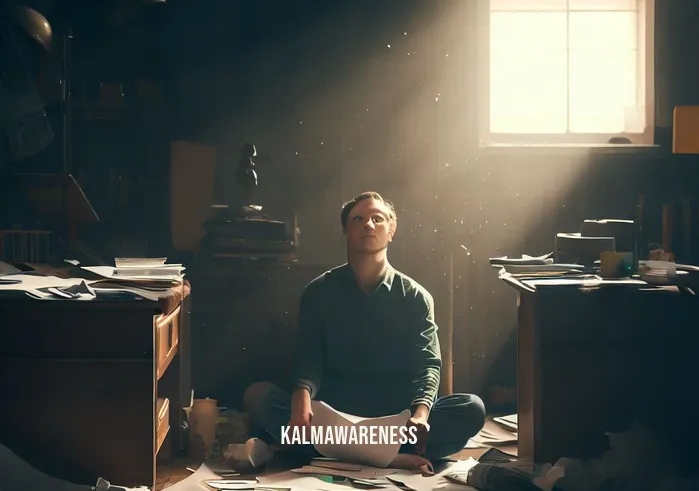
The Multifaceted Experience of a Person Meditating
As we journey deeper into the labyrinth of meditation, it’s crucial to explore the different layers that come into play when a person is meditating. From the nuances of mindful movement to the psychological benefits that extend beyond the meditation mat, the act of meditating can be as complex or as simple as you make it. In this chapter, we’ll unpack some of these elements, spotlighting how they enrich the overall experience.
Mindful Movement as an Extension of Meditation
Mindful movement extends the principles of meditation into physical action. It emphasizes the idea that movement, like meditation, can be a form of worship or deep respect for oneself. Whether you are walking as a teenager to clear your mind or engaged in Rouse Yoga, mindful movement serves as an accessible entry point or a complementary practice for anyone who meditates.
The Psychological Benefits of Meditation
Alleviates Stress
The act of sitting quietly and focusing the mind has been shown to reduce stress by lowering cortisol levels.
Enhances Mental Clarity
Meditation helps in stabilizing your mental state, offering a clear mind for better judgment, making you wise in your decisions.
Fosters Emotional Well-Being
Through meditation, you can touch that emotional part of you that needs healing, which leads to better emotional well-being.
Increases Attention Span
A focused meditation practice allows you to keep important elements in mind, hence improving your attention span.
Promotes Self-Love
One of the core benefits is the promotion of self-love and self-care. Mirror gazing, for example, is a meditation technique that helps you confront and accept your true self.
Techniques in Meditation: A Comparative Table
| Technique | Focus Area | Benefits |
|---|---|---|
| Breath Awareness | Breathing | Increases lung capacity, improves focus |
| Mindfulness | Thoughts and Feelings | Enhances emotional regulation, reduces stress |
| Zen | Enlightenment | Promotes a peaceful mind, encourages spiritual growth |
| Mantra | Repetition of Words or Sounds | Helps in memory, enhances concentration |
| Loving-kindness Meditation | Sending out Good Wishes | Fosters compassion, reduces anger and frustration |
The Path to Greater Serenity
A person meditating regularly experiences a kind of peace that is difficult to articulate but palpable to those who practice it. If you’re looking to be more peaceful in life, meditation provides a structured path to achieving that tranquility. With various forms of meditation available, you can customize your practice based on your preferences and needs.
Meditation as a Daily Practice
Building a meditation habit can be as simple as dedicating one moment for each blessed day. The daily commitment doesn’t have to be burdensome; even ten minutes per day can lead to noticeable changes in your well-being. And with time, this evolves into a practice that’s not just about self-improvement, but also about understanding the deeper dimensions of life.
Unlocking the Next Level of Your Meditation Journey
By now, it’s clear that a person meditating isn’t merely sitting in silence but engaging in a multi-dimensional activity that enhances physical, mental, and spiritual well-being. From incorporating mindful movement to understanding the psychological upliftment it offers, the act of meditating is more profound and enriching than one might initially perceive.
As we transition to the next chapter, we’ll focus on a topic that often gets overlooked but is incredibly important—sustainable self-care in meditation. How do you make sure your meditation practice is not just a one-off event but a sustainable lifestyle choice?
To unravel this and more, continue reading.
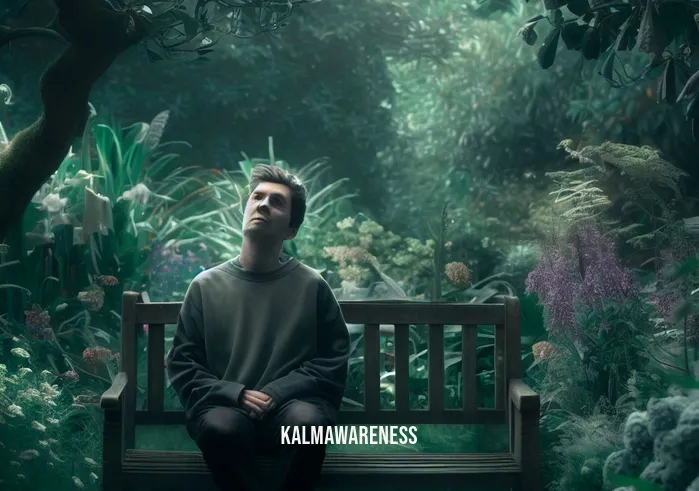
The Inspirational Journey of a Person Meditating
As we navigate through the layered terrain of meditation, we may come to wonder what drives a person to maintain such a disciplined practice. Where does the inspiration come from? And how does a person meditating find the fuel to sustain this inner exploration over the long term? This chapter delves into the wellspring of hope and inspiration that a meditation practice can offer, often serving as the invisible force that keeps one grounded yet aspirational.
The Power of Hope in Meditation
In the words of Thich Nhat Hanh, “Hope is important because it can make the present moment less difficult to bear. If we believe that tomorrow will be better, we can bear a hardship today.” This wisdom is especially relevant when you’re learning how to establish a regular meditation practice. Recognizing the sustainable self-care aspects of meditation can keep the hope alive, motivating you to delve deeper into the practice.
Learning from the Masters: Quotes that Inspire
Jack Kornfield
“Meditation is not to escape from society, but to come back to ourselves and see what is going on.”
— For beginners or seasoned practitioners, this thought from Jack Kornfield offers a poignant reminder of why we meditate.
Jon Kabat-Zinn
“You can’t stop the waves, but you can learn to surf.”
— Kabat-Zinn’s words resonate with anyone who’s ever felt overwhelmed but finds serenity—a form of ‘surfing’—through mindfulness.
Pema Chödrön
“Inner peace begins the moment you choose not to allow another person or event to control your emotions.”
— This quote aptly summarizes the essence of attaining a peaceful state of mind, one of the principal aims of meditation.
Visualizing the Spiritual Aspects: Beyond Mere Practice
While meditation often starts as a practice, it can quickly evolve into something profoundly spiritual. Some people find that their time spent meditating allows them to connect with something greater than themselves. An element of some meditation exercises, like hypnobirthing, even allows people to tap into a deeper, almost primal, level of consciousness that feels otherworldly yet deeply personal.
The Timelessness of Zen: Always Pretty Soon
“Pretty soon is the oasis in the desert, not the desert itself,” says an old Zen saying. The very notion that there’s something to aspire to keeps us rooted in the present moment, understanding that what we seek is always pretty soon—neither far off in the future nor stuck in the past. This concept has a lot to offer to a person who is meditating, as it encourages us to be present, patient, and hopeful.
Meditation as a Reflection of Daily Life
Just as you don’t have to sit in a lotus position to achieve a meditative state—you can even meditate lying down—you don’t have to compartmentalize meditation as something separate from the rest of your life. Meditation can become a reflection of your daily life, as simple yet meaningful as taking a moment to focus on a side chair and appreciate its form and function.
What Awaits You in Your Next Meditation Chapter
Inspiration is not a one-time event; it evolves and grows with each passing day and each meditation session. What has been an inspiration for you today might be the source of hope for someone else tomorrow. And as we look forward to the next chapter, we’ll explore the transformative power of meditation. What does science say about it? How can a person who meditates experience life-altering changes, both subtle and dramatic?
To answer these questions and more, continue reading.
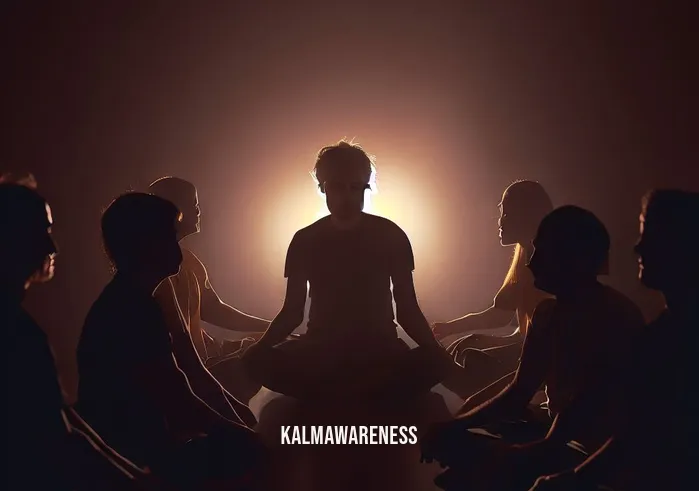
The Anatomy of Meditation: A Detailed Look at a Person Meditating
After traversing the emotional and inspirational terrain of meditation, it’s time to break it down into its essential elements. The art and science of meditation have various layers that can be dissected for a better understanding of its facets. A person meditating isn’t just sitting in silence; they’re engaging in a complex mental, physical, and sometimes spiritual act. Here, we’ll delve into the granularity of what makes meditation such an impactful practice.
The Psychological Aspects: Judgments, Wisdom, and More
A meditation practitioner often strives to develop what is known as the “Judgment of the Wise“. This involves:
- Cultivating discernment, not mere judgment
- Fostering emotional intelligence
- Encouraging empathy and compassion
To understand how to get there, you need to keep in mind that meditation is not just an exercise but a way of life, inviting us to be more mindful in our daily interactions.
The Physical Fundamentals: Posture and Movement
If you’re someone who’s invested in mindful movement practices, be it yoga or tai chi, you’d understand that posture plays a crucial role in how effective your meditation will be. Here’s what to consider:
- Sitting Posture: The most traditional way to meditate. Chairs, cushions, and even specialized focus-side chairs can be used.
- Walking Meditation: Far from the stereotypes, teenagers walking can also be a form of active meditation.
- Lying Down: Yes, you can even meditate lying down, which is especially good for those with physical discomfort.
The Breathing Element: A Cornerstone of Meditation
Breathing, although an unconscious act, gains conscious relevance when a person is meditating. It’s essential to know how to stabilize your breath for a more productive session. Here are some popular techniques:
- Diaphragmatic Breathing: Deep breathing to engage the diaphragm.
- Counted Breath: Inhale, hold, and exhale for specific counts.
- Observational Breathing: Being mindful of the breath without altering its natural pace.
The Journey to Mindfulness and Beyond
While mindfulness is an element of some meditation exercises, the realm of a person meditating extends beyond. It includes:
- Mindfulness: Focuses on being aware of the present moment.
- Zen: A form of Buddhist meditation that involves sitting and letting thoughts come and go.
- Transcendental Meditation: Involves the repetition of a mantra.
- Loving-kindness Meditation: Focuses on emitting feelings of love and kindness towards oneself and others.
Approaching the Zenith: The Final Chapter Awaits
Having dissected the practice of meditation into its core components—ranging from the physical to the mental and spiritual—it’s time to look at how all these individual pieces create a holistic experience. As we’ve seen, meditation is not a monolithic concept but a vibrant tapestry of techniques, philosophies, and intentions. So, how does this all come together in a person who is deeply entrenched in the meditative practice?
The final chapter is just around the corner, and it promises to bring together everything we’ve discussed so far. Whether you’re a seasoned practitioner or a novice seeking to better understand this ancient yet ever-relevant practice, the concluding chapter is set to be an eye-opening expedition into the art of meditation. Continue reading to join us on this illuminating journey.

Reflecting on the Journey: A Final Look at a Person Meditating
As we draw to the end of this comprehensive exploration, it’s time for a deep, mindful breath. From discussing the psychological aspects to diving deep into the anatomy of postures, we’ve traversed the multi-faceted universe of a person meditating. Let’s take a moment to reflect on the journey and what it means for anyone who partakes in this timeless practice.
What Makes Meditation an Indispensable Practice
Meditation is a way to be peaceful in a world often fraught with stress and chaos. The act of a person meditating is not merely a form of escape; it’s an essential tool for sustainable self-care, allowing us to become grounded and refocused. Through mindful breaths and focused attention, meditation offers the promise of a life less encumbered by unnecessary worries.
Lessons Learned: An Overview
We’ve covered a lot of ground, and a quick recap might be just what we need to internalize these valuable lessons. The practice of meditation:
- Promotes Mindfulness: Being mindful is an element in some meditation exercises that teaches us to live in the present moment.
- Physical Well-being: Through proper postures and mindful movement, we set the stage for a healthier body.
- Psychological Benefits: From cultivating judgment of the wise to understanding our thoughts and emotions, the mental perks are manifold.
- Diverse Practices: Whether you prefer Zen, Mindfulness, or even Hypnobirthing, there’s something for everyone.
Final Thoughts: Being, Breathing, and Beyond
Meditation is not just a practice but a state of being. By involving ourselves in attaining a peaceful state of mind, we pave the way for a happier, healthier existence. After all, a person meditating is a person choosing to live better, breathe deeper, and embrace serenity.
The Road Ahead: Your Journey Continues
We’ve reached the end of this particular voyage, but remember, your journey doesn’t have to stop here. Feel free to revisit any chapter for a refresher or explore more content that we offer. There’s a wealth of information waiting to be unearthed, and we’re committed to bringing you the best.
Thank You for Joining Us
We appreciate the time and attention you’ve invested in exploring the universe of a person meditating. Rest assured, more enlightening content awaits you in future editions. Until then, keep practicing, keep exploring, and most importantly, keep being you.
So go ahead, find your comfortable spot, close your eyes if you like, and breathe. Because as the saying goes, the best way to capture a moment is to pay attention. This is just the beginning.
Thank you for joining us on this insightful expedition, and here’s to many more journeys of mindfulness and serenity together. Keep meditating, keep growing.
